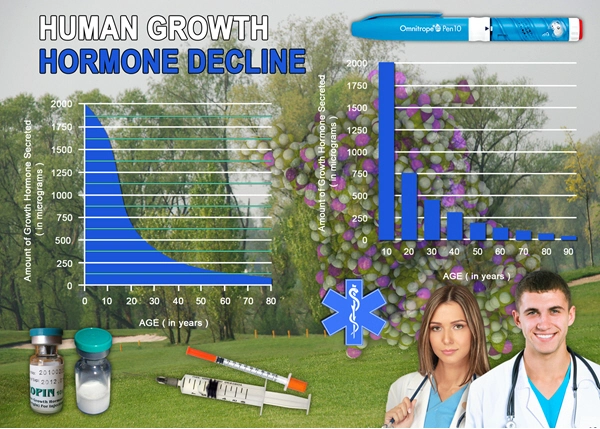Introduction
Semaglutide, a glucagon-like peptide-1 (GLP-1) receptor agonist, has emerged as a pivotal treatment in the management of type 2 diabetes and obesity. Its role in improving glycemic control and promoting weight loss is well-documented. However, its impact on lipoprotein profiles, particularly in American males, warrants a closer examination. This article aims to provide clinicians with a comprehensive understanding of semaglutide's effects on lipoproteins and its implications for patient care.
Semaglutide's Mechanism of Action
Semaglutide functions by mimicking the incretin hormone GLP-1, which enhances insulin secretion, suppresses glucagon release, and slows gastric emptying. These actions contribute to better glucose control and reduced caloric intake, leading to weight loss. The drug's influence on lipid metabolism, however, is less straightforward and requires nuanced consideration.
Impact on Lipoprotein Profiles
Clinical studies have shown that semaglutide can positively affect lipoprotein profiles. A notable reduction in low-density lipoprotein cholesterol (LDL-C) and triglycerides (TG) has been observed, which is beneficial for cardiovascular health. Conversely, high-density lipoprotein cholesterol (HDL-C) levels may remain unchanged or slightly decrease, a finding that necessitates further investigation.
Specific Considerations for American Males
American males, particularly those with a higher prevalence of obesity and metabolic syndrome, may experience unique benefits from semaglutide. The drug's ability to lower LDL-C and TG is particularly relevant, given the increased risk of cardiovascular disease in this demographic. Clinicians should monitor lipid profiles closely, as individual responses can vary.
Clinical Implications and Monitoring
When prescribing semaglutide, clinicians should consider the following:
- **Baseline Lipid Profile Assessment:** Obtain a comprehensive lipid profile before initiating treatment to establish a baseline.
- **Regular Monitoring:** Monitor lipid levels at regular intervals, typically every 3-6 months, to assess the drug's impact and adjust treatment as necessary.
- **Cardiovascular Risk Assessment:** Evaluate the patient's overall cardiovascular risk, considering factors such as family history, smoking status, and other comorbidities.
Potential Side Effects and Management
While semaglutide is generally well-tolerated, gastrointestinal side effects such as nausea and diarrhea are common, especially during the initial phase of treatment. These symptoms often subside over time but may require dose adjustments or temporary cessation of the drug. Clinicians should educate patients about these potential side effects and provide strategies for management.
Integration with Other Therapies
Semaglutide can be used in conjunction with other lipid-lowering therapies, such as statins, to achieve optimal cardiovascular outcomes. The synergistic effects of these treatments can enhance the reduction of LDL-C and TG levels. Clinicians should tailor the combination therapy based on the patient's individual needs and response to treatment.
Patient Education and Adherence
Patient education is crucial for ensuring adherence to semaglutide therapy. Clinicians should emphasize the importance of regular monitoring and the potential benefits of improved lipid profiles. Encouraging lifestyle modifications, such as a healthy diet and regular exercise, can further enhance the drug's efficacy and overall health outcomes.
Conclusion
Semaglutide offers significant benefits for American males in managing type 2 diabetes and obesity, with a favorable impact on lipoprotein profiles. Clinicians must remain vigilant in monitoring lipid levels and adjusting treatment plans to optimize cardiovascular health. By understanding the nuances of semaglutide's effects on lipoproteins, healthcare providers can better serve their patients and improve long-term outcomes.
References
1. Marso, S. P., et al. (2016). Liraglutide and cardiovascular outcomes in type 2 diabetes. New England Journal of Medicine, 375(4), 311-322.
2. Davies, M., et al. (2019). Semaglutide 2.4 mg once a week in adults with overweight or obesity, and type 2 diabetes (STEP 2): a randomised, double-blind, double-dummy, placebo-controlled, phase 3 trial. The Lancet, 394(10205), 941-952.
3. Aroda, V. R., et al. (2020). Efficacy and safety of once-weekly semaglutide versus once-daily insulin glargine as add-on to metformin (with or without sulfonylureas) in insulin-naive patients with type 2 diabetes (SUSTAIN 4): a randomised, open-label, parallel-group, multicentre, multinational, phase 3a trial. The Lancet Diabetes & Endocrinology, 8(5), 374-386.

- Unlocking the Potential of Semaglutide: A Ground-Breaking Advance in Diabetes Management and Weight Loss [Last Updated On: February 25th, 2025] [Originally Added On: February 25th, 2025]
- Journey of a Game Changer: Semaglutide from Laboratory Conception to Therapeutic Application [Last Updated On: February 26th, 2025] [Originally Added On: February 26th, 2025]
- Unlocking the Secrets of Semaglutide: An In-depth Exploration of GLP-1 Science [Last Updated On: February 27th, 2025] [Originally Added On: February 27th, 2025]
- The Revolutionary Role of Semaglutide in Metabolism Management: A Step Beyond Blood Sugar [Last Updated On: February 28th, 2025] [Originally Added On: February 28th, 2025]
- The Battle of Biochemicals: Spotlight on Semaglutide vs Other GLP-1 Agonists in 2024 [Last Updated On: February 28th, 2025] [Originally Added On: February 28th, 2025]
- Revolutionizing Diabetes Management: Spearheading Change with Semaglutide [Last Updated On: March 1st, 2025] [Originally Added On: March 1st, 2025]
- Revolutionizing Patient Healing: The Semaglutide Miracle [Last Updated On: March 2nd, 2025] [Originally Added On: March 2nd, 2025]
- Semaglutide: Preserving Beta-Cell Function in American Males with Type 2 Diabetes [Last Updated On: March 3rd, 2025] [Originally Added On: March 3rd, 2025]
- Exploring Semaglutide: A Comprehensive Guide to Its Use in Weight Management and Type 2 Diabetes Treatment [Last Updated On: March 3rd, 2025] [Originally Added On: March 3rd, 2025]
- Semaglutide: Managing Diabetes and Obesity with Ozempic and Wegovy [Last Updated On: March 4th, 2025] [Originally Added On: March 4th, 2025]
- Semaglutide: Managing Diabetes and Obesity in American Men [Last Updated On: March 4th, 2025] [Originally Added On: March 4th, 2025]
- Exploring Semaglutide's Role in Cardiovascular Health and Diabetes Management [Last Updated On: March 5th, 2025] [Originally Added On: March 5th, 2025]
- Semaglutide's Impact on Type 2 Diabetes and Obesity in American Males [Last Updated On: March 6th, 2025] [Originally Added On: March 6th, 2025]
- Optimizing Semaglutide Dosing for Weight Loss in American Men: A Comprehensive Guide [Last Updated On: March 7th, 2025] [Originally Added On: March 7th, 2025]
- Exploring the Efficacy and Convenience of Oral and Injectable Semaglutide for American Males [Last Updated On: March 7th, 2025] [Originally Added On: March 7th, 2025]
- Semaglutide for Type 2 Diabetes: Side Effects, Safety, and Considerations for American Males [Last Updated On: March 8th, 2025] [Originally Added On: March 8th, 2025]
- Semaglutide: Revolutionizing Obesity Management for American Men Through Hormonal Mimicry [Last Updated On: March 9th, 2025] [Originally Added On: March 9th, 2025]
- Unpacking the Economic Implications of Semaglutide: A Comprehensive Analysis on Cost, Coverage, and Value for American Males [Last Updated On: March 12th, 2025] [Originally Added On: March 12th, 2025]
- Real-World Insights: The Impact of Semaglutide on American Men's Health [Last Updated On: March 13th, 2025] [Originally Added On: March 13th, 2025]
- Exploring the Impact of Semaglutide on Metabolic Syndrome: A Detailed Analysis for American Males [Last Updated On: March 15th, 2025] [Originally Added On: March 15th, 2025]
- Semaglutide: A Game-Changer for American Men in Managing Type 2 Diabetes and HbA1c [Last Updated On: March 16th, 2025] [Originally Added On: March 16th, 2025]
- Semaglutide: Revolutionizing Appetite Control for American Males' Weight Management [Last Updated On: March 17th, 2025] [Originally Added On: March 17th, 2025]
- GLP-1 Therapy Evolution: Semaglutide to Multi-Hormone Agonists and Beyond [Last Updated On: March 19th, 2025] [Originally Added On: March 19th, 2025]
- Semaglutide: Transforming Lives of American Men Through Weight Loss Success Stories [Last Updated On: March 19th, 2025] [Originally Added On: March 19th, 2025]
- Semaglutide in Primary Care: Benefits and Considerations for American Males with Type 2 Diabetes [Last Updated On: March 19th, 2025] [Originally Added On: March 19th, 2025]
- Semaglutide: Enhancing Cardiovascular Health in American Males Through Lipid Management [Last Updated On: March 19th, 2025] [Originally Added On: March 19th, 2025]
- Semaglutide's Anti-Inflammatory Benefits for American Males: Beyond Diabetes Management [Last Updated On: March 19th, 2025] [Originally Added On: March 19th, 2025]
- Semaglutide: Managing Type 2 Diabetes and Obesity in American Males [Last Updated On: March 19th, 2025] [Originally Added On: March 19th, 2025]
- Semaglutide and Insulin: Complementary Therapies for Diabetes Management in American Men [Last Updated On: March 20th, 2025] [Originally Added On: March 20th, 2025]
- Semaglutide: A Comprehensive Guide for American Males on Diabetes and Weight Management [Last Updated On: March 21st, 2025] [Originally Added On: March 21st, 2025]
- Semaglutide Innovations: Revolutionizing Diabetes and Obesity Management in American Males [Last Updated On: March 21st, 2025] [Originally Added On: March 21st, 2025]
- Personalizing Semaglutide Therapy for American Males: A Holistic Approach [Last Updated On: March 22nd, 2025] [Originally Added On: March 22nd, 2025]
- Semaglutide: Enhancing Weight Management in American Males via Satiety Hormones [Last Updated On: March 22nd, 2025] [Originally Added On: March 22nd, 2025]
- Managing Semaglutide Side Effects: Strategies for American Males [Last Updated On: March 22nd, 2025] [Originally Added On: March 22nd, 2025]
- Semaglutide and Exercise: Enhancing Health in American Males [Last Updated On: March 23rd, 2025] [Originally Added On: March 23rd, 2025]
- Semaglutide Therapy Guide for American Males: Steps to Manage Diabetes and Obesity [Last Updated On: March 23rd, 2025] [Originally Added On: March 23rd, 2025]
- Semaglutide: A Breakthrough in Obesity Treatment for American Men [Last Updated On: March 23rd, 2025] [Originally Added On: March 23rd, 2025]
- Semaglutide's Impact on Kidney Health in American Males with Type 2 Diabetes [Last Updated On: March 23rd, 2025] [Originally Added On: March 23rd, 2025]
- Semaglutide and Telemedicine: Revolutionizing Diabetes Management for American Males [Last Updated On: March 23rd, 2025] [Originally Added On: March 23rd, 2025]
- Semaglutide: Managing Diabetes and Weight Loss - A Guide for American Men [Last Updated On: March 23rd, 2025] [Originally Added On: March 23rd, 2025]
- Semaglutide's Anti-Inflammatory Benefits for American Males: Insights and Implications [Last Updated On: March 24th, 2025] [Originally Added On: March 24th, 2025]
- Semaglutide's Impact on Mental Health: Insights for American Males [Last Updated On: March 24th, 2025] [Originally Added On: March 24th, 2025]
- Semaglutide: Enhancing Energy and Vitality in American Males with Type 2 Diabetes [Last Updated On: March 24th, 2025] [Originally Added On: March 24th, 2025]
- Semaglutide: Enhancing Quality of Life for American Males with Diabetes and Obesity [Last Updated On: March 24th, 2025] [Originally Added On: March 24th, 2025]
- Semaglutide: Revolutionizing Diabetes and Obesity Management in American Males [Last Updated On: March 24th, 2025] [Originally Added On: March 24th, 2025]
- Semaglutide: Effective Diabetes and Obesity Treatment for American Males [Last Updated On: March 25th, 2025] [Originally Added On: March 25th, 2025]
- Semaglutide: Enhancing Health and Vitality in Aging American Males [Last Updated On: March 25th, 2025] [Originally Added On: March 25th, 2025]
- Semaglutide: Revolutionizing Diabetes and Weight Management in American Men [Last Updated On: March 25th, 2025] [Originally Added On: March 25th, 2025]
- Semaglutide: A Breakthrough in Weight Management for American Males [Last Updated On: March 25th, 2025] [Originally Added On: March 25th, 2025]
- Innovative Semaglutide Delivery Systems: Enhancing Diabetes and Obesity Management in American Males [Last Updated On: March 25th, 2025] [Originally Added On: March 25th, 2025]
- Semaglutide: Empowering American Men in Diabetes and Weight Management [Last Updated On: March 25th, 2025] [Originally Added On: March 25th, 2025]
- Semaglutide Enhances Sleep Quality in American Men with Diabetes: A Comprehensive Overview [Last Updated On: March 26th, 2025] [Originally Added On: March 26th, 2025]
- Semaglutide's Role in Interdisciplinary Care for American Males' Health [Last Updated On: March 26th, 2025] [Originally Added On: March 26th, 2025]
- Maximizing Semaglutide Benefits for American Males: Strategies and Insights [Last Updated On: March 26th, 2025] [Originally Added On: March 26th, 2025]
- Semaglutide Safety in American Males: Long-Term Effects and Considerations [Last Updated On: March 26th, 2025] [Originally Added On: March 26th, 2025]
- Semaglutide Reduces Inflammatory Markers in American Males: CRP, IL-6, TNF-α Impact [Last Updated On: March 26th, 2025] [Originally Added On: March 26th, 2025]
- Semaglutide: Transforming Obesity and Diabetes Perceptions in American Men [Last Updated On: March 26th, 2025] [Originally Added On: March 26th, 2025]
- Semaglutide: Revolutionizing Diabetes, Weight, and Cardiovascular Health in American Males [Last Updated On: March 26th, 2025] [Originally Added On: March 26th, 2025]
- Semaglutide's Real-World Impact on Diabetes and Weight Loss in American Males [Last Updated On: March 26th, 2025] [Originally Added On: March 26th, 2025]
- Semaglutide: Balancing Endocrine Health in American Males [Last Updated On: March 27th, 2025] [Originally Added On: March 27th, 2025]
- Semaglutide's Role in Managing Diabetes and Complications in American Males [Last Updated On: March 27th, 2025] [Originally Added On: March 27th, 2025]
- Semaglutide's Potential and Challenges in Managing Adolescent Metabolic Health in the U.S. [Last Updated On: March 27th, 2025] [Originally Added On: March 27th, 2025]
- Semaglutide Therapy Enhanced by Balanced Diet and Hydration for American Males [Last Updated On: March 28th, 2025] [Originally Added On: March 28th, 2025]
- Genetics Influence Semaglutide Response in American Males: Personalized Treatment Insights [Last Updated On: March 28th, 2025] [Originally Added On: March 28th, 2025]
- Semaglutide Adherence Strategies for American Men: Enhancing Diabetes and Obesity Management [Last Updated On: March 28th, 2025] [Originally Added On: March 28th, 2025]
- Semaglutide and GLP-1 Receptors: A Breakthrough for Diabetes and Obesity in American Males [Last Updated On: March 29th, 2025] [Originally Added On: March 29th, 2025]
- Semaglutide vs. Other Weight-Loss Drugs: A Comprehensive Guide for American Males [Last Updated On: March 30th, 2025] [Originally Added On: March 30th, 2025]
- Semaglutide: Enhancing Glucose Control and Health in American Males with Diabetes [Last Updated On: March 31st, 2025] [Originally Added On: March 31st, 2025]
- Semaglutide: A Comprehensive Approach to Cardiovascular Health in American Men [Last Updated On: March 31st, 2025] [Originally Added On: March 31st, 2025]
- Semaglutide: Transforming Lives of American Men with Diabetes and Obesity [Last Updated On: April 1st, 2025] [Originally Added On: April 1st, 2025]
- Guide to Securing Semaglutide Insurance Coverage for American Males [Last Updated On: April 1st, 2025] [Originally Added On: April 1st, 2025]
- Semaglutide: A Promising Tool for Preventing Diabetes in At-Risk American Males [Last Updated On: April 2nd, 2025] [Originally Added On: April 2nd, 2025]
- Semaglutide: Economic Impact on Diabetes and Obesity in American Men [Last Updated On: April 2nd, 2025] [Originally Added On: April 2nd, 2025]
- Semaglutide: A Holistic Approach for American Males' Diabetes and Weight Management [Last Updated On: April 5th, 2025] [Originally Added On: April 5th, 2025]
- Semaglutide's Impact on Visceral Fat Reduction in American Males: A Comprehensive Review [Last Updated On: April 6th, 2025] [Originally Added On: April 6th, 2025]
- Semaglutide Pharmacokinetics: Optimizing Diabetes and Obesity Treatment in American Males [Last Updated On: April 7th, 2025] [Originally Added On: April 7th, 2025]
- Semaglutide: A Game-Changer for American Men's Weight and Diabetes Management [Last Updated On: April 8th, 2025] [Originally Added On: April 8th, 2025]
- Semaglutide and Behavioral Therapy: A Holistic Approach to Weight Loss for American Males [Last Updated On: April 10th, 2025] [Originally Added On: April 10th, 2025]
- Enhancing Semaglutide Therapy with CGM for American Males with Type 2 Diabetes [Last Updated On: April 10th, 2025] [Originally Added On: April 10th, 2025]
- Semaglutide: Enhancing Metabolic Efficiency and Exercise Performance in American Males [Last Updated On: April 11th, 2025] [Originally Added On: April 11th, 2025]



List of USA state clinics - click a flag below for blood testing clinics.
Word Count: 614



















































